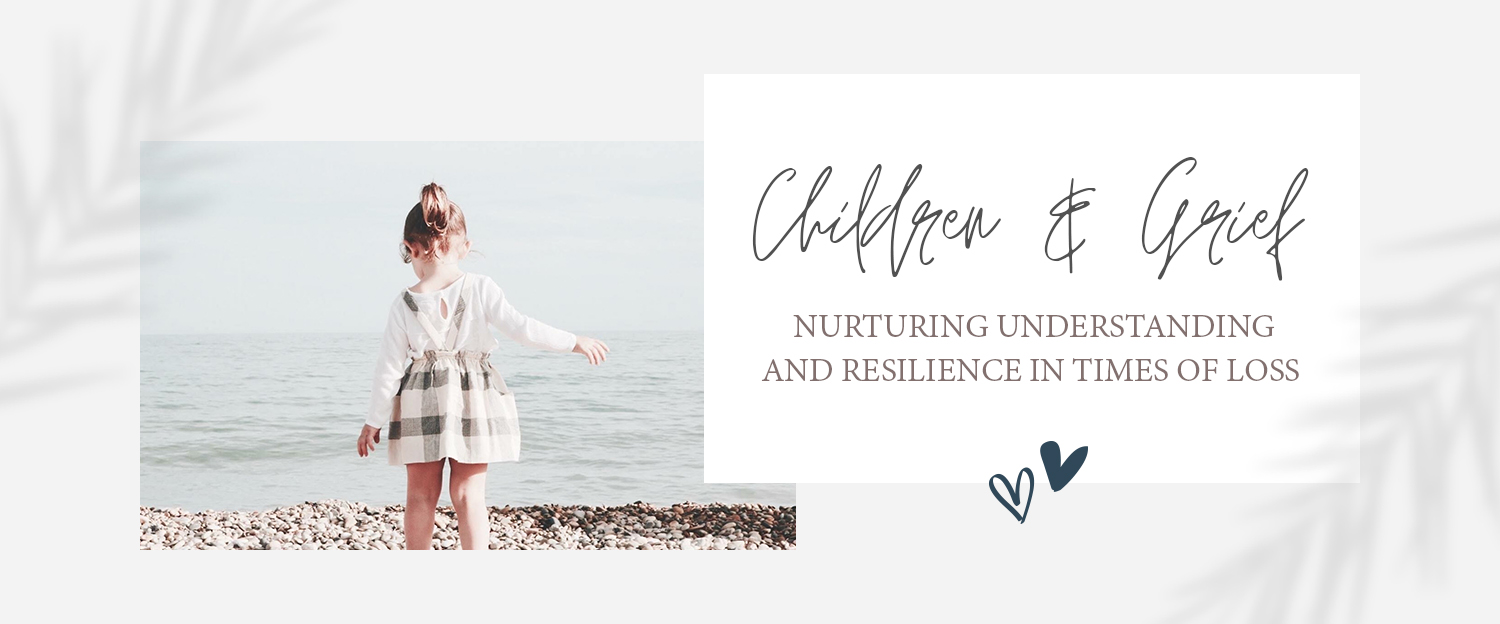 Life’s journey includes both moments of joy and sorrow, and for children, navigating the complex emotions of grief can be especially challenging. As parents, guardians, and caregivers, it is our responsibility to guide them through this delicate process. In this blog, we delve into the world of children and grief, exploring strategies to help young hearts comprehend, cope, and heal when faced with the loss of a loved one. By providing the right support and nurturing understanding, we can empower children to develop resilience and navigate the path of grief with compassion.
Life’s journey includes both moments of joy and sorrow, and for children, navigating the complex emotions of grief can be especially challenging. As parents, guardians, and caregivers, it is our responsibility to guide them through this delicate process. In this blog, we delve into the world of children and grief, exploring strategies to help young hearts comprehend, cope, and heal when faced with the loss of a loved one. By providing the right support and nurturing understanding, we can empower children to develop resilience and navigate the path of grief with compassion.
 Creating a Safe Space for Expression:
Creating a Safe Space for Expression:
Children often find it difficult to express their emotions, and grief is no exception. It is essential to create a safe and open space where they feel comfortable sharing their thoughts and feelings. Encourage honest conversations without judgment, allowing them to express their confusion, sadness, anger, or even relief. Listen actively, validate their emotions, and reassure them that it is okay to feel a mix of emotions.
 Using Age-Appropriate Language:
Using Age-Appropriate Language:
Explaining the concept of loss to a child requires careful consideration of their age and comprehension level. Use simple, age-appropriate language to convey the situation. Avoid euphemisms that might confuse them. Be honest, but sensitive in your approach. For younger children, comparing the situation to something relatable, like the changing of seasons, can help them grasp the idea of life’s cycles.
 Answering Questions Honestly:
Answering Questions Honestly:
Children are naturally curious, and their questions about death may range from the practical to the philosophical. Answer their questions honestly, and if you don’t know the answer, be willing to explore it together. Address their inquiries in a gentle manner, ensuring that they understand the permanence of the loss while offering reassurance that their feelings are valid.
 Incorporating Creative Outlets:
Incorporating Creative Outlets:
Art, storytelling, and play can serve as powerful channels for children to express their emotions and understand grief. Provide them with creative outlets to share their feelings. Encourage drawing, painting, or writing stories to express their emotions. Play therapy can also be beneficial, allowing them to act out their feelings in a safe and non-direct way.
Grief is a complex journey marked by a whirlwind of emotions. Normalise the wide spectrum of emotions that children may experience, emphasising that all feelings are valid. Teach them that emotions like anger, guilt, or even moments of happiness are a natural part of the grieving process. By acknowledging and validating their emotions, you empower them to process and cope in a healthy manner.
 Encouraging Rituals and Remembrance:
Encouraging Rituals and Remembrance:
Rituals can provide a sense of structure and understanding for children during times of loss. Engage them in age-appropriate rituals like creating memory boxes, planting a tree, memorial jewellery or lighting a candle in remembrance. These rituals offer comfort and help children grasp the concept of honouring and preserving memories.
Memorial jewellery, adorned with a loved one’s handwriting or a cherished photograph, can become a tangible and cherished connection for children dealing with grief. These precious pieces hold the power to keep memories alive in a beautifully personal way. Imagine a pendant bearing the handwriting of the departed, forever preserving their unique script and the love-filled notes they penned. Alternatively, a locket containing or engraved with a tiny photograph can serve as a comforting presence, allowing children to hold a visual reminder of their loved one close to their heart. Memorial jewellery offers a tangible way for children to feel the enduring presence of their dear one, providing solace during moments of longing and uncertainty. Each time they touch their jewellery, they can experience a sense of closeness that eases the pain of loss and offers a comforting embrace in their journey of healing.
 Seeking Professional Support:
Seeking Professional Support:
If you notice persistent changes in behaviour, extreme withdrawal, or other signs of distress in your child, consider seeking professional support. Child psychologists or counsellors specialised in grief can offer age-appropriate guidance and strategies to help children navigate their emotions.
 Fostering Resilience and Coping:
Fostering Resilience and Coping:
As children begin to understand grief, focus on nurturing their resilience and coping skills. Teach them healthy ways to manage their emotions, such as deep breathing, journaling, or engaging in physical activities. Encourage them to communicate openly and seek support when needed.
Children possess an incredible capacity to learn, adapt, and heal. By fostering an environment of open communication, understanding, and compassion, we can guide them through the complex journey of grief. Remember, every child’s grief experience is unique, and there is no one-size-fits-all approach. With patience, empathy, and unwavering support, we can empower children to develop resilience, navigate grief with grace, and ultimately find hope amidst the pain. Let us embark on this journey together, providing our children with the tools they need to comprehend, cope, and heal in the face of loss.









